Media | Articles
The 9 best straight-six engines
At the 2018 Los Angeles Auto Show, an event filled with a humdrum mix of cookie cutter crossovers and electrified SUVs, Mercedes-Benz blasted a big hole in the boring with the announcement it will once again offer an inline six-cylinder engine in the United States. An all-new turbocharged 3.0-liter, which will spit out a combined 362 horsepower and 364 lb-ft of torque with the help of an electric motor, will power the redesigned 2019 CLS sedan.
The German automaker, as well as the rest of the industry, has a long love affair with the straight-six, an engine design revered for its bottom end torque and smooth operation. Over the decades, however, the lust for the power and rumble of a V-8 and the more compact packaging afforded by a V-6 caused most automakers to toss the inline six pot aside. BMW stuck with the configuration, creating gems like its N54 and N55 as well as its 3.0-liter turbocharged B58 which is still in production today. But elsewhere the inline-six has been all but extinct.
Now that it’s back at Benz we decided to celebrate by choosing the greatest straight six engines of all time. Some of our favorites didn’t make the final cut (and we’re ready for your votes in the comments), but we managed to create a list thick with mechanical mastery from America, Germany, Britain, and Japan.
Chevy Stovebolt Six
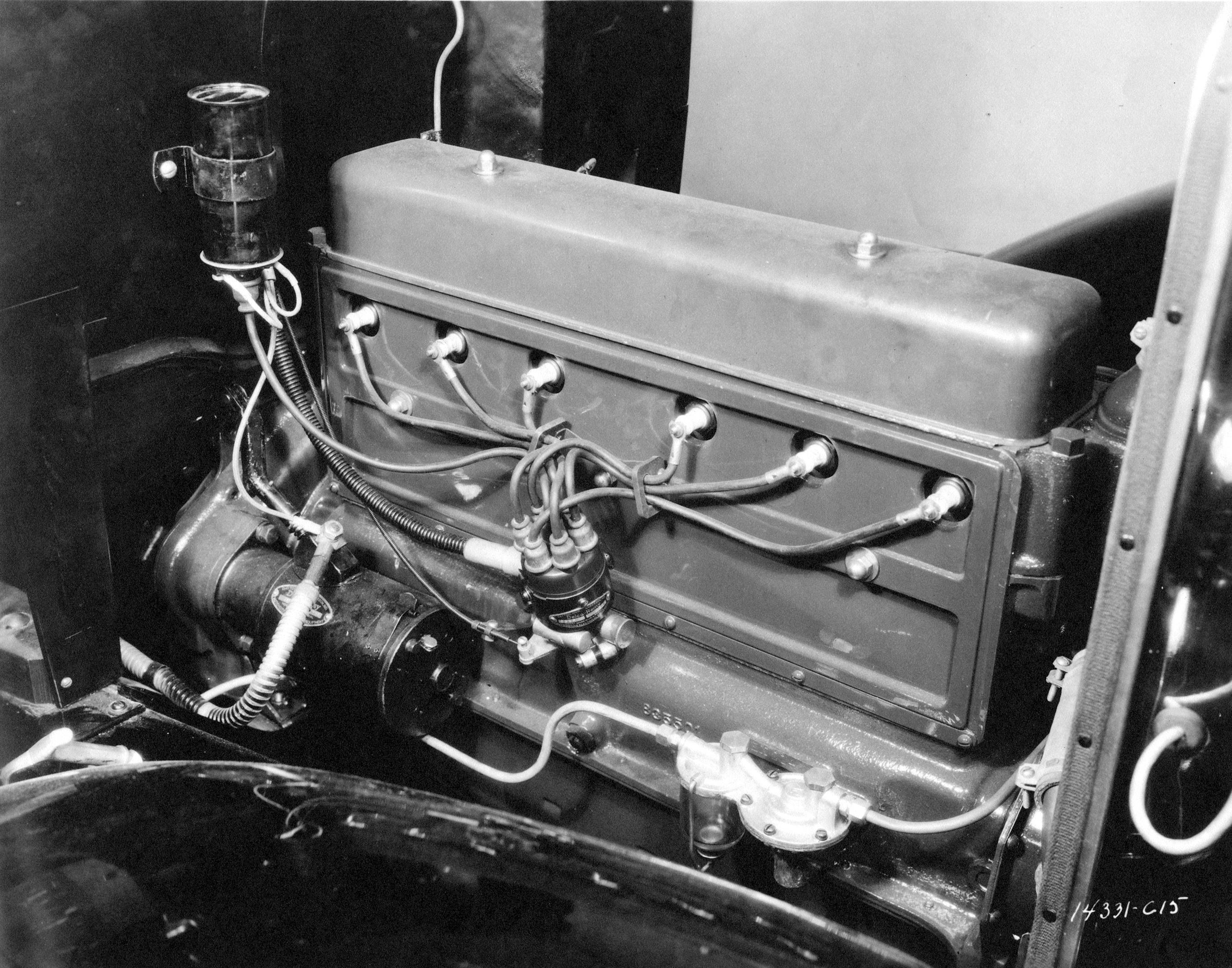
Chevy’s only engine from 1929 to 1954, and GM’s first mass-produced engine with more than four cylinders, the Stovebolt successfully battled both Ford’s standard four-cylinder and the more powerful (and much sexier) Flathead V-8. Over the decades the Stovebolt powered both cars and trucks until the optional overhead valve small block V-8 upstaged it in 1955. The engine’s first generation lasted until 1937 and the second-generation, which featured improved durability and performance, would remain in production until 1962. The first Stovebolt was 194 cubic inches making 50 hp. In 1953 a 235 cubic inch version called the Blue Flame with 136 hp powered the first Corvettes. It was nicknamed the Stovebolt because its valve cover used fasteners with slotted heads similar to the bolts used on wood-burning sheet metal stoves constructed in the 1920s.
Marketplace
Buy and sell classics with confidence
Mercedes-Benz 3.0-liter

Fitted with a groundbreaking mechanical direct fuel injection system developed by Bosch, this inline six-cylinder engine won both the 24 Hours of Le Mans and the Carrera Panamericana in 1952. To fit under the sports car’s hood, the 3.0-liter was mounted at a forty-five degree angle, and in both the racecars as well as the street versions of 300 SL it featured single overhead cams, a unique aluminum head design and an 8.55:1 compression ratio, although it was raised to 9.5:1 before production ended in 1963. (A previous version of this story stated the engine was in the 300 SLR that Stirling Moss drove to victory in the 1955 Mille Miglia. That car was equipped with a straight-eight engine.)
Chrysler Slant-Six
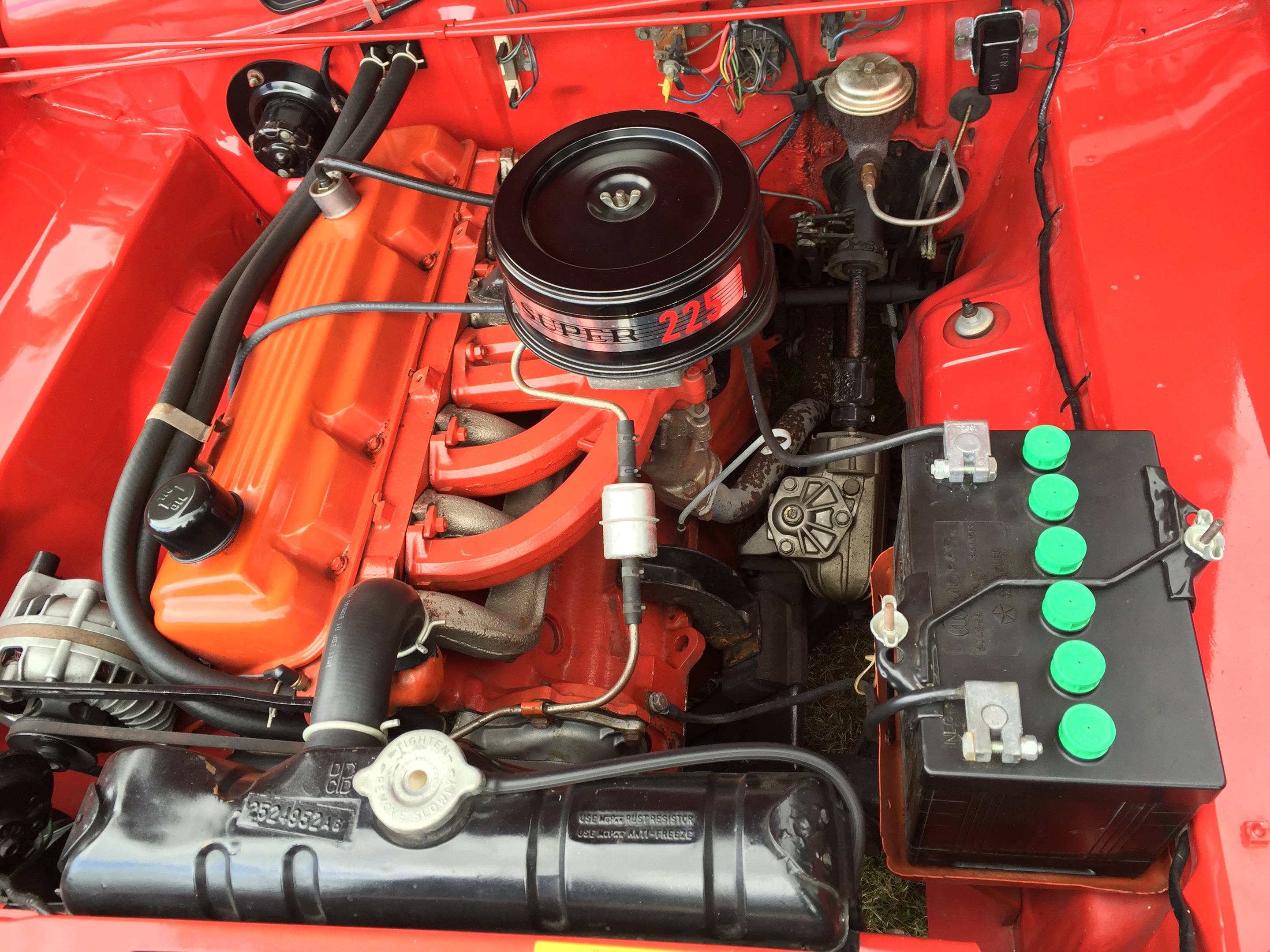
Introduced in 1960, the 225 cubic inch engine was quickly nicknamed the Slant-Six because of its odd and obvious 30-degree tilt toward the passenger side of the vehicle. At the time Chrysler said this lowered the car’s center of gravity, aided the access of the engine accessories and it allowed them to fit the inline engine under the lower hood of its new Valiant model. The unique design also allowed for equal-length intake and exhaust manifold runners, which increased the engine’s torque. Despite horsepower ratings never cresting 200 hp and the engine ending production in 1983, the durable Slant-Six was easily modified and still has a rabid following today.
BMW M88 3.5-liter
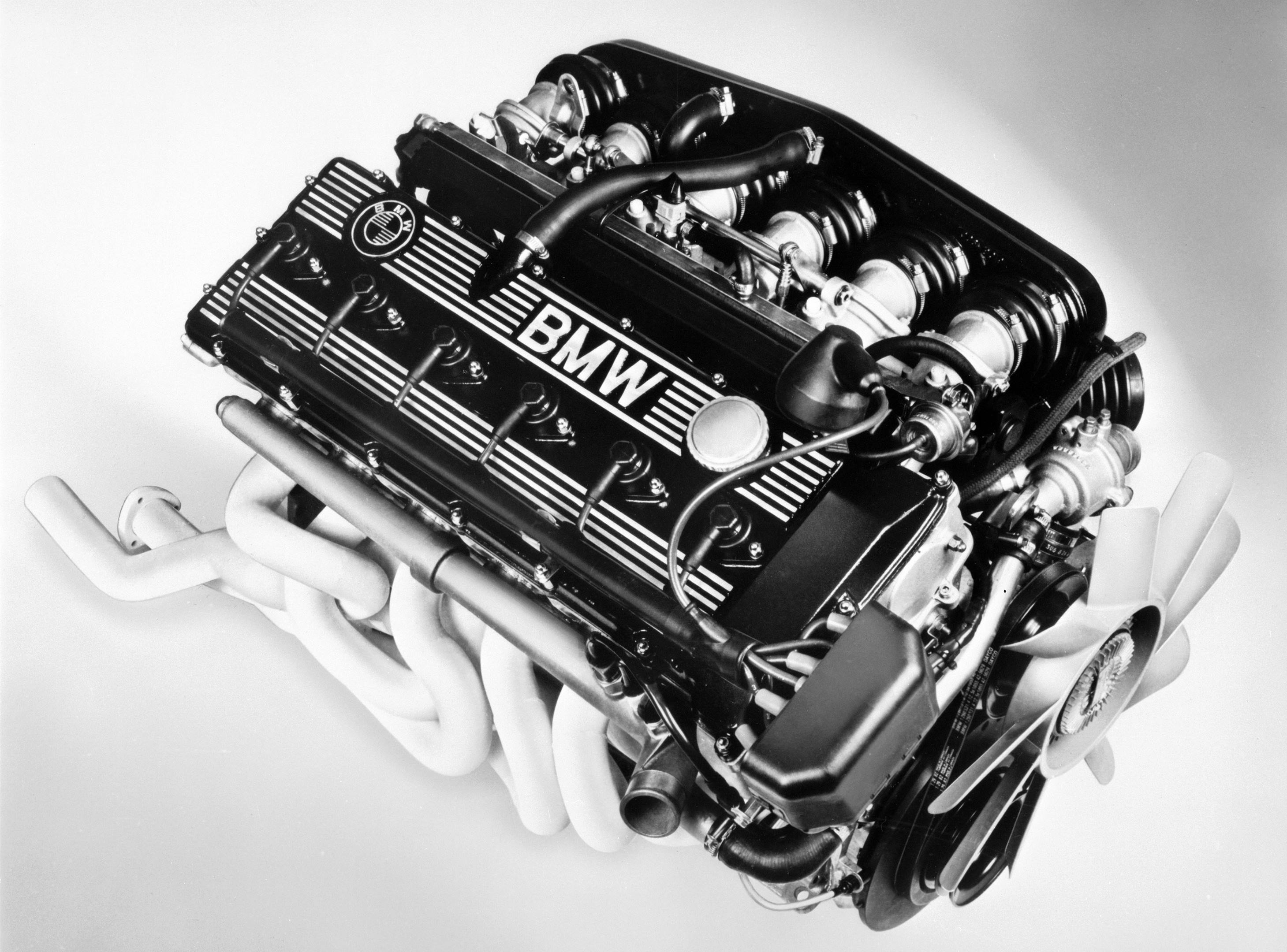
Used in the exotic M1 sports car, and then in the first M5 and M6, BMW’s M88 3.5-liter inline-six is one of the greatest engines of any type of all time. In the M1 the dry sump, double overhead cam six made 272 hp at 6,500 rpm and 243 lb-ft of torque at 5,000 rpm. Monster power for the time, it easily outpowered larger V-8s and it revved out like a racecar. After the M1 mess BMW decided to crank up the engine to 282 hp and stick it in its shark-nosed 6-Series coupe, creating the 1983 M6, a luxurious German muscle car that could corner and crest 150 mph. And then in 1985 the combination with two more additional doors became the iconic M5, at the time the best performing sedan in the world.
Jeep 4.0-liter
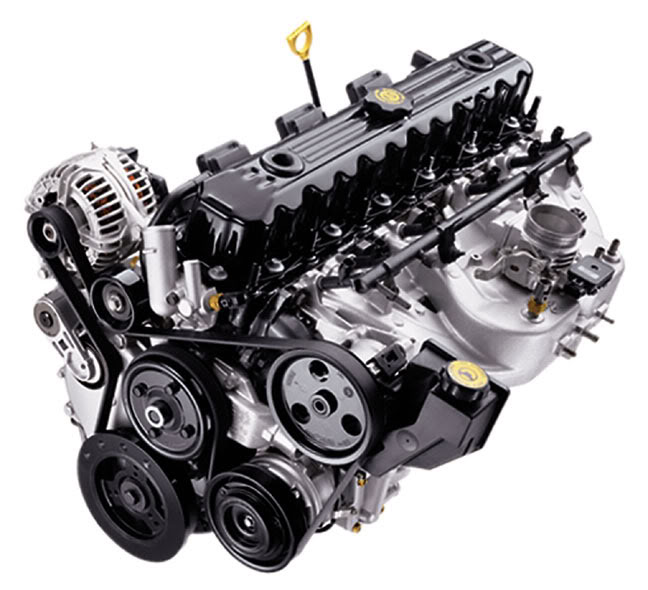
With its roots and schematics dating back to American Motors and 1964, Jeep’s legendary 4.0-liter cast iron, fuel injected straight-six first appeared in the Cherokee and Comanche models in the 1987 model year. With 173 hp and 215 lb-ft of torque it was more powerful than the V-6s from GM, Ford, and Nissan. The torquey, low rpm, large displacement motor began to power the YJ-generation Wrangler in 1991 and the Grand Cherokee in 1993. Output peaked at 190 hp and 235 lb-ft of torque when production finally ended in 2006 (it was replaced by a V-6), but the 4.0-liter’s durability and the sheer number of these things in junkyards all over America keep the love affair with the powerplant hot and heavy.
Toyota Yamaha 2.0-liter

This engine wasn’t built in large numbers, but it was exotic for the time and it proved to the world that Toyota and the Japanese were capable of creating serious performance cars. Built specifically for Toyota’s 2000GT sports car, the double overhead cam 2.0-liter inline-six was engineered by Yamaha, based on the engine from a Toyota Crown sedan. Yamaha created the DOHC cylinder head, added three two-barrel Solex carburetors, and worked out a 7,000-rpm redline. Toyota only built about 350 production versions of the 2000GT with the 150 hp engine. In 1967 a 2000GT won the Fuji 1000 Kilometers race, the sports car set several FIA speed and endurance records in a 72-hour test, and then Carroll Shelby entered three cars in SCCA competition in 1968.
Toyota 2JZ
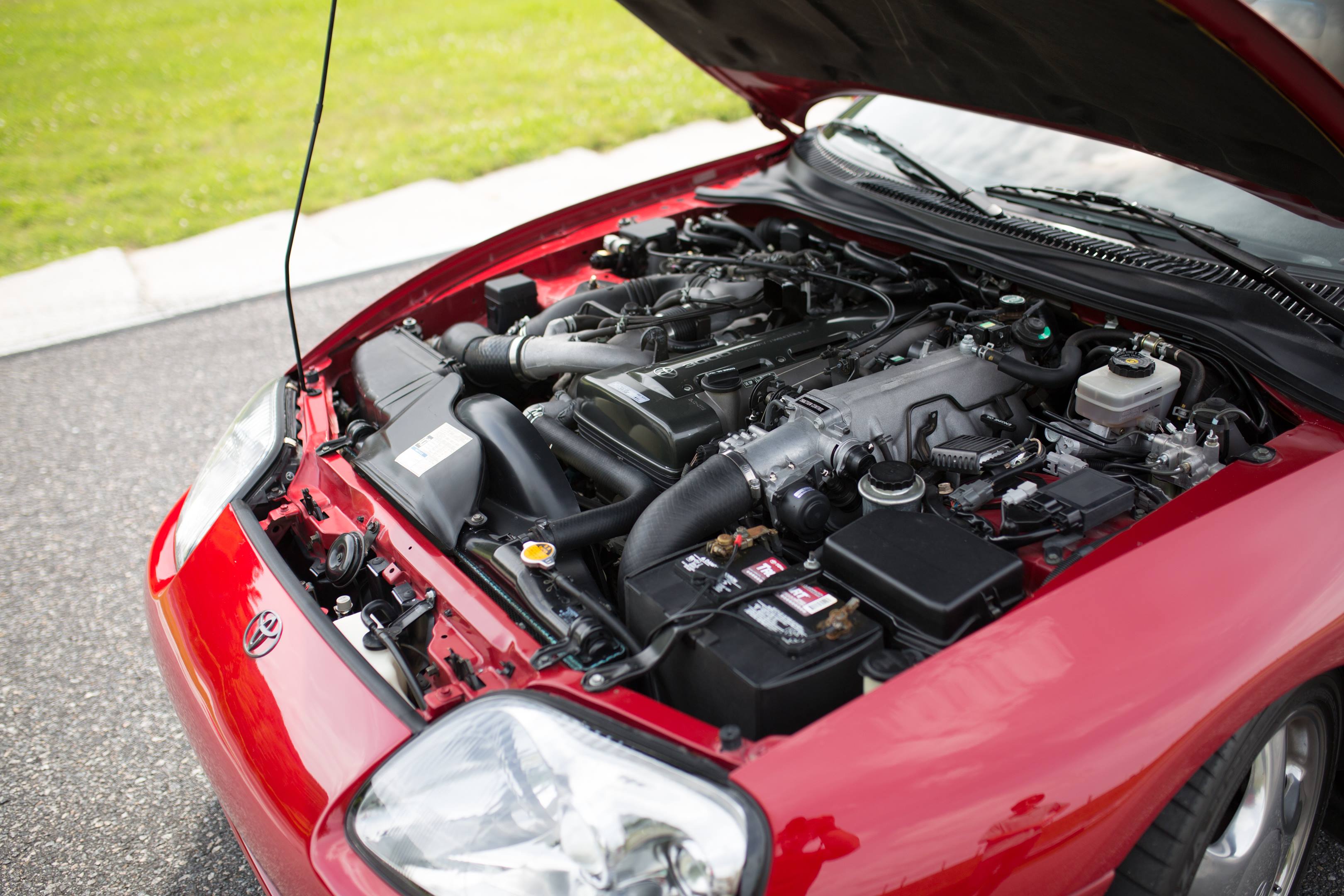
In production from 1990-2005, the Toyota 2JZ-GE and its twin-turbocharged cousin the 2JZ-GTE are legendary with young enthusiasts brought up during the mid-1990s straight through to the Fast and Furious era. This inline six-cylinder, both in naturally aspirated and turbocharged forms, is best known for powering the A80, or fourth-generation, of the Toyota Supra, a car we just named it to Hagerty’s inaugural Bull Market List of Cars to Watch in the Coming Year. First introduced in 1993, Turbo models packed 320 hp and 315 lb-ft of torque. But more importantly the 2JZ’s cast iron engine block wasn’t just bulletproof, it was indestructible. Street racers and power junkies quickly began adding boost and other modifications and soon 1,000-hp Supras running 9-second quarter miles were no big deal.
Nissan RB26DETT
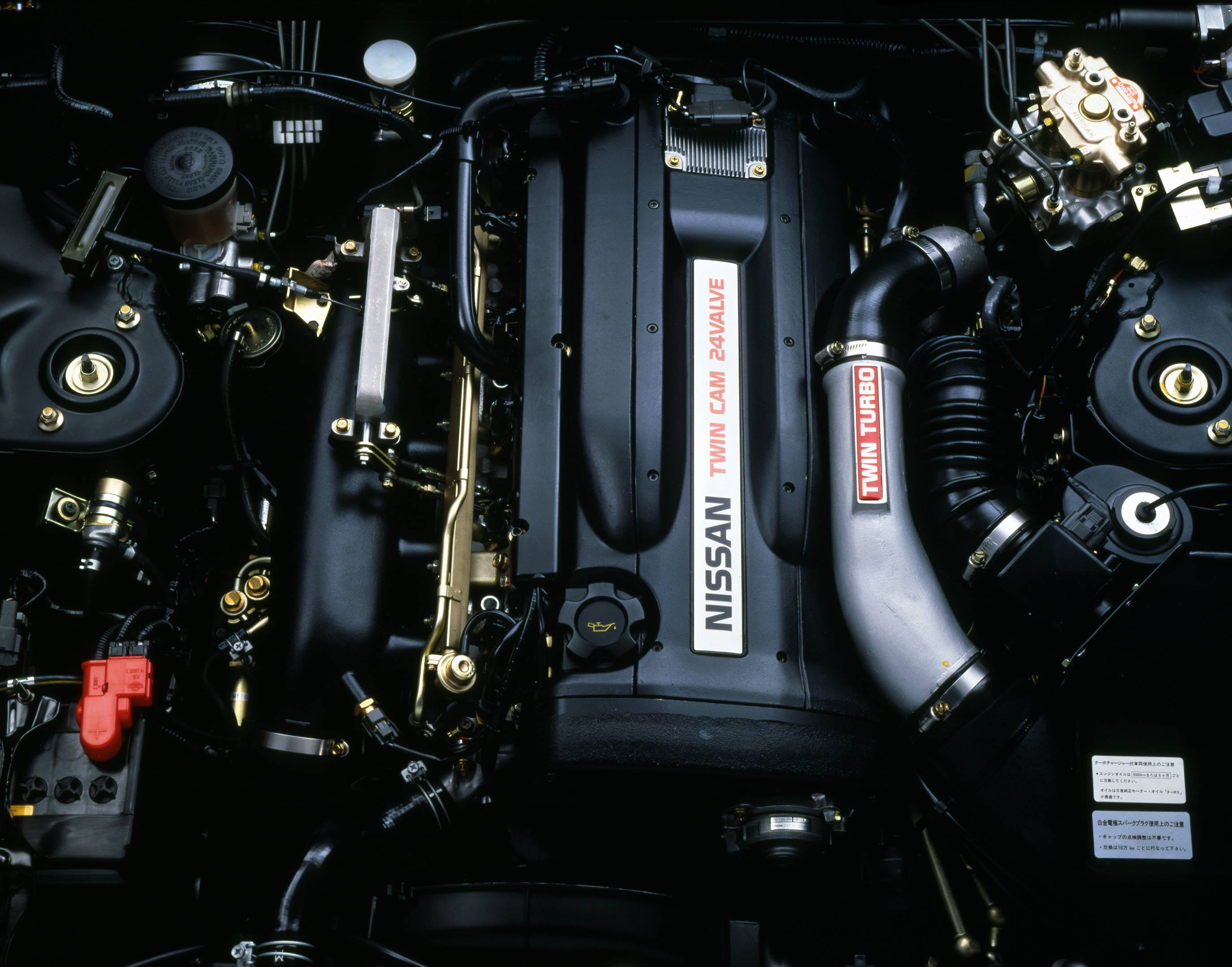
The Toyota 2JZ-GTE’s rival on the street, the track, and the dyno is Nissan’s RB26DETT, the twin-turbocharged 2.6-liter inline six that powered the R32, R33 and R34 generations of the Skyline GT-R from 1989-2002. The DOHC engine uses a cast-iron block, an aluminum cylinder head and a unique intake with six individual throttle bodies. The first RB26DETT was rated 276 hp at 6800 rpm and 260 lb-ft at 4400 rpm. By the end of production, 13 years later torque had risen to 289 lb-ft but the horsepower rating hadn’t changed because of a “Gentlemen’s Agreement” made between Japanese automakers to limit the advertised horsepower of any vehicle to 276 hp. The final versions of the R34 were rumored to make closer to 400 hp in reality. Like the Supra, 1,000 at the wheels on the street was no big deal for the Nissan.
Jaguar XK6
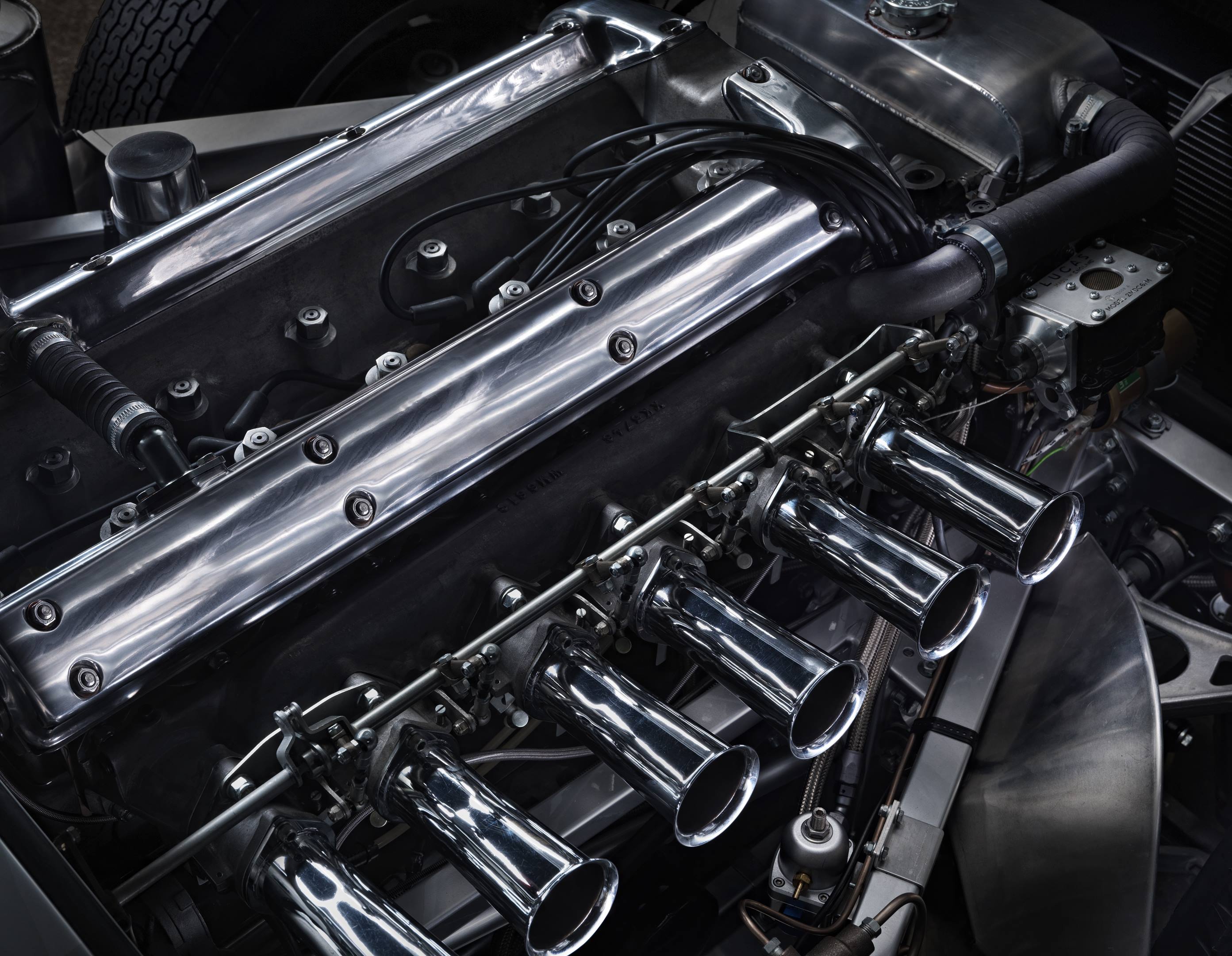
Although it powered sedans, shooting brakes and even hearses, Jaguar’s iconic XK6 inline six-cylinder engine made its bones under the hood of the brand’s legendary sports cars of the 1950s and 1960s. Oh, and it also won LeMans. Three Times in a row. 1956. 1957. 1958. This engine in various displacements ranging from 3.4 liters to 4.2 liters powered C-Types, D-Types, the XKSS, the XK120, XK140, XK150 and the E-Type, not to mention the S-Type and XJ sedans and the lushious XJ6 Coupes. One of the most beautiful engines of all time with its long and lean rocker covers, the XK6 was also durable with a robust cast iron block and a seven-bearing crankshaft. It also featured an aluminum cylinder head and it took well to modifications. Add higher compression, additional or larger carburetors and it made more power. Incredibly, Jaguar’s straight-six was in production from 1949 until 1992.



The chevy stove bolt was a 216 ci with babbitt rod bearings. GMC had a larger version in the 261 range (a real workhorse with tons of torque)
These were replaced in 1954 with the 235
Rod bearing engine..a great engine used into the sixties. MyDad had a 56 wagon that he traded in 1962 which was still using 20w oil.
I’ll admit that the Ford 300 should have been recognized, even though I despise Ford. And in your list of other vehicles that were powered by the Jaguar DOHC XJ, you left out tanks – the entire Scorpion tank family.
Why the don’t have straight 6 in these years Ford f150 like 2007 or newer because that 5.4l is bull sh… and would you change over to a straight 6?
What about the Australian built Chrysler Hemi 6, Holden 6 and Ford 6 engines.
I love all inline sixes (with the exception of the Falcon 6) but this should have been based on two category’s the working mans six and the sports six
The fact that there is no Barra in this list is blasphemy to Inline 6 engines
I’m thoroughly surprised the Ford 4.9 (300 six) didn’t make that list despite the hundreds of thousands of them still quietly chugging along 20 to 50 years after they went in service. My ’86 F150 has one of these and that engine never left me at the side of road, had amazing low end torque, got wonderful fuel economy (relative to 5 litre V8s) and was not using any oil nor had been serviced or opened (aside from valve cover and exhaust manifold gaskets) when I treated myself to having a full engine rebuild and body refurb done to the old girl at 1/2 million km.
Have heard nada about an inln overhd cam 6 that came ina mid 60’s jeep that we had
The best inline Six ever made was the Australian made and developed Ford “Barra” engine, it was a 4 litre turbocharged engine that developed over 2000 HP , unfortunately they were only available in Australia and New Zealand
I guess they forgot to add the Pontiac overhead cam inline six from the Tempest. It figures as they left out the Ford 300 as well.
The Pontiac overhead cam engine was as fragile as an egg; Particularly the 4 barrel Sprint version. Not sure if the 250 was any better than the 230 but it only lasted for one year. The 4 barrel sprint went like a scalded cat when it ran.
Don’t forget that Aston Martin’s straight 6 in the early DB cars was more impressive than most with over 325 hp from a 4 liter, NA engine.
I have a Ford 200 –6 One of the best engines It should be listed instead of that foreign junk
The only one I am knowlage about is the Chevy 235 and the other variations. The 292 is pretty strong and reliable.
My stepdad and I built and raced cars with the GMC 6 cylinder for years. It was a strong power plant for
dirt track racers back in the early 60’s. Easy to modify and could found easily as many trucks were powered
by them. It was a very bullet proof at the track.